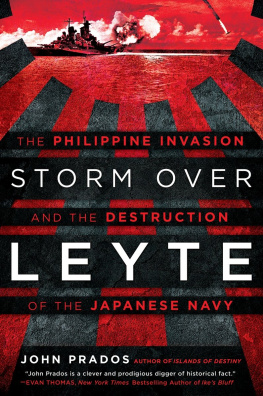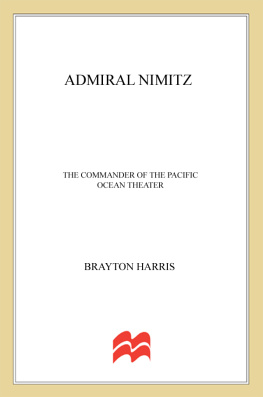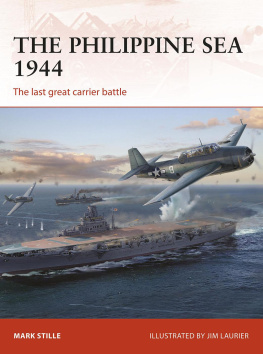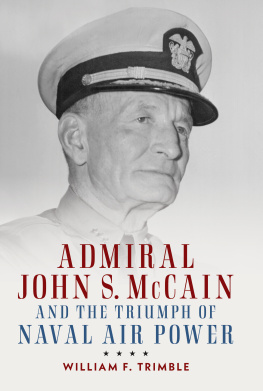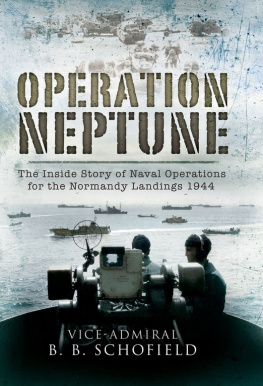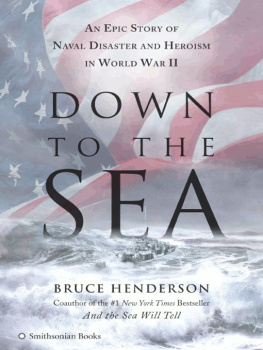HALSEYS TYPHOON
HALSEYS TYPHOON
The True Story of a Fighting
Admiral, an Epic Storm, and
an Untold Rescue
BOB DRURY
AND
TOM CLAVIN

Copyright 2007 by Bob Drury and Tom Clavin
All rights reserved. No part of this book may be reproduced in any form or by any electronic or mechanical means, or the facilitation thereof, including information storage and retrieval systems, without permission in writing from the publisher, except by a reviewer, who may quote brief passages in a review. Any members of educational institutions wishing to photocopy part or all of the work for classroom use, or publishers who would like to obtain permission to include the work in an anthology, should send their inquiries to Grove/Atlantic, Inc., 841 Broadway, New York, NY 10003.
Published simultaneously in Canada
Printed in the United States of America
FIRST EDITION
Library of Congress Cataloging-in-Publication Data
Drury, Bob.
Halseys typhoon : the true story of a fighting admiral, an epic storm, and an untold rescue / Bob Drury & Tom Clavin.
p. cm.
Includes bibliographical references and index.
eBook ISBN-13: 978-1-5558-4629-9
1. United States. Navy. Fleet, 3rdHistory. 2. World War, 19391945Naval operations, American. 3. TyphoonsHistory20th century. 4. ShipwrecksPhilippine SeaHistory. 5. Survival after airplane accidents, shipwrecks, etc. 6. Halsey, William Frederick, 18821959. I. Clavin,
Thomas. II. Title.
D773.D78 2007
940.545973dc22 2006049948
Atlantic Monthly Press
an imprint of Grove/Atlantic, Inc.
841 Broadway
New York, NY 10003
Distributed by Publishers Group West
www.groveatlantic.com
To the 793 who
perished with honor, with
dignity, and with courage.
CONTENTS
DRAMATIS PERSONAE
Third Fleet
Adm. William Halsey, Commander of Third Fleet
Adm. John McCain, Commander of Task Force 38
Comdr. George Kosco, Chief Aerologist of Third Fleet
Adm. Mick Carney, Halseys Chief of Staff
Capt. Jasper Acuff, Commander of Task Group 30.8
Capt. Preston Mercer, Commander of Destroyer Squadron 1
Lt. (j.g.) Jerry Ford, USS Monterey
Capt. Charles Calhoun, USS Dewey
Capt. William Rogers, USS Aylwin
Capt. Stuart Ingersoll, USS Monterey
Capt. R. W. Bockius, USS Cape Esperance
Capt. Michael Kernodle, USS San Jacinto
Capt. Raymond Toner, USS Robert F. Keller
Capt. H. P. Butterfield, USS Nehenta Bay
USS Tabberer
Capt. Henry Lee Plage
Lt. Bob Surdam, Executive Officer
Lt. (j.g.) Howard Korth, Gunnery Officer
Louis Purvis, Bosuns Mate 1st Class
Paul Cookie Phillips, Ships Cook 1st Class
William McClain, Mailman 3rd Class
Leonard Glaser, Shipfitter 3rd Class
John Cross, Signalman 3rd Class
Ralph Tucker, Chief Radioman
Tom Bellino, Gunners Mate
Lt. Frank Cleary, Medical Officer
USS Hull
Capt. James Marks
Lt. Griel Gherstly, Executive Officer
Lt. (j.g.) Lloyd Rust, CIC Officer
Archie DeRyckere, Chief Quartermaster
Pat Douhan, Petty Officer 2nd Class
Ray Schultz, Chief Bosuns Mate
Tom Stealey, Fireman
Spiz Hoffman, Ships Cook 1st Class
Nick Nagurney, Fireman 1st Class
USS Monaghan
Capt. Bruce Garrett
Keith Abbott, Radar Technician
Joe McCrane, Watertender 2nd Class
Evan Fenn, Fireman
Joe Guio, Gunners Mate
USS Spence
Capt. James Andrea
Lt. (j.g.) Alphonso Krauchunas
Bob Ayers, Gunners Mate Striker
George Johnson, Chief Watertender
Floyd Balliett, Radar Technician
Other Officers
Adm. Ernest King, Chief of U.S. Naval Operations
Gen. Douglas MacArthur, Field Marshal, Combined American-Filipino Army
Adm. Chester Nimitz, Commander of Pacific Naval Operations (CINCPAC)
Arleigh Burke, Commander, DesRon 23, Little Beavers
Adm. Raymond Spruance, Commander of Fifth Fleet
Rear Adm. Thomas Kinkaid, Commander of (MacArthurs) Seventh Fleet
GLOSSARY
Abaft toward the stern of a boat; behind
Abeam on a line at right angles to a ships keel
Aft (also stern) the rear part of a ship
Amidships in or toward the center
Beam the width of a ship at its widest part
Bow (also prow) the forward part of a ship
Bridge the raised platform on a ship from which it is navigated
Bulkhead a vertical partition separating compartments
CINCPAC commander in chief, U.S. Pacific Fleet (Nimitz)
Coaming a vertical piece around the edge of a cockpit, hatch, etc., to prevent water on deck from running below
Comdr. commander
CPO chief petty officer
CWO chief warrant officer
Following sea an overtaking sea that comes from astern
Helm the wheel or lever controlling the rudder of a ship
Hull the frame or body of a ship (excluding masts, yards, and rigging)
Keel the longitudinal plate extending along and projecting from the center of the bottom of a ship
Leeward away from the direction of the wind; opposite of windward
Line nautical term for a rope
Locked in Irons unable to escape the liquid gorge formed by parallel waves on either side of a ship
Pilothouse (also wheelhouse) the deckhouse for a ships helmsman containing the steering wheel and navigating equipment
Port the left side of a ship
Starboard the right side of a ship
Stern the rear of a ship
TBS talk-between-ships
Watch four-hour period when a sailor is on duty
Windward toward the direction from which the wind is coming
PREFACE
December 18, 1944
The Philippine Sea, 500 Miles East of Luzon
Chief Quartermaster Archie DeRyckere was more astonished than frightened. He craned his neck to stare at the massive waves, churning gouts of water, some reaching ninety feet in height. The seas were not only mammoth, but confused by a backing wind that slammed into the sheer, flint gray walls of ocean and seemed to suspend them in midair, like looming, petrified hills. The USS Hull rolled at unprecedented angles, slip-sliding nearly stern-first into the trough.
DeRyckere had sailed through weather before, none like this. The rain blew hard, horizontal, pelting the bridge like grapeshot and pocking the skin of any seaman who had the hard luck to face it. As another huge comber marbled the Hulls deck with whitewater, the chief was reminded of a set of tumblers clicking into place, locking the 2,100-ton destroyer in irons.
For the better part of the morning DeRyckere had listened with mounting disbelief from his station on the bridge as the Hulls TBS (talk-between-ships) ship-to-ship wireless flashed scratchy distress calls from across the whole upheaval of the Philippine Sea. Vessels unaccounted for. Men swept overboard. Fighter planes blown into the sea off the decks of carriers. Cruisers dead in the water. The 170-odd ships comprising Adm. William F. Halsey Jr.s Third Pacific Fleet, the United States Navys Big Blue Fleet, had been ambushed by a tropical cyclone, and the most powerful armada in the world was scattered and running for its life. This was far worse, DeRyckere thought, than anything the Japanese had thrown at them over the past three days.
Next page



